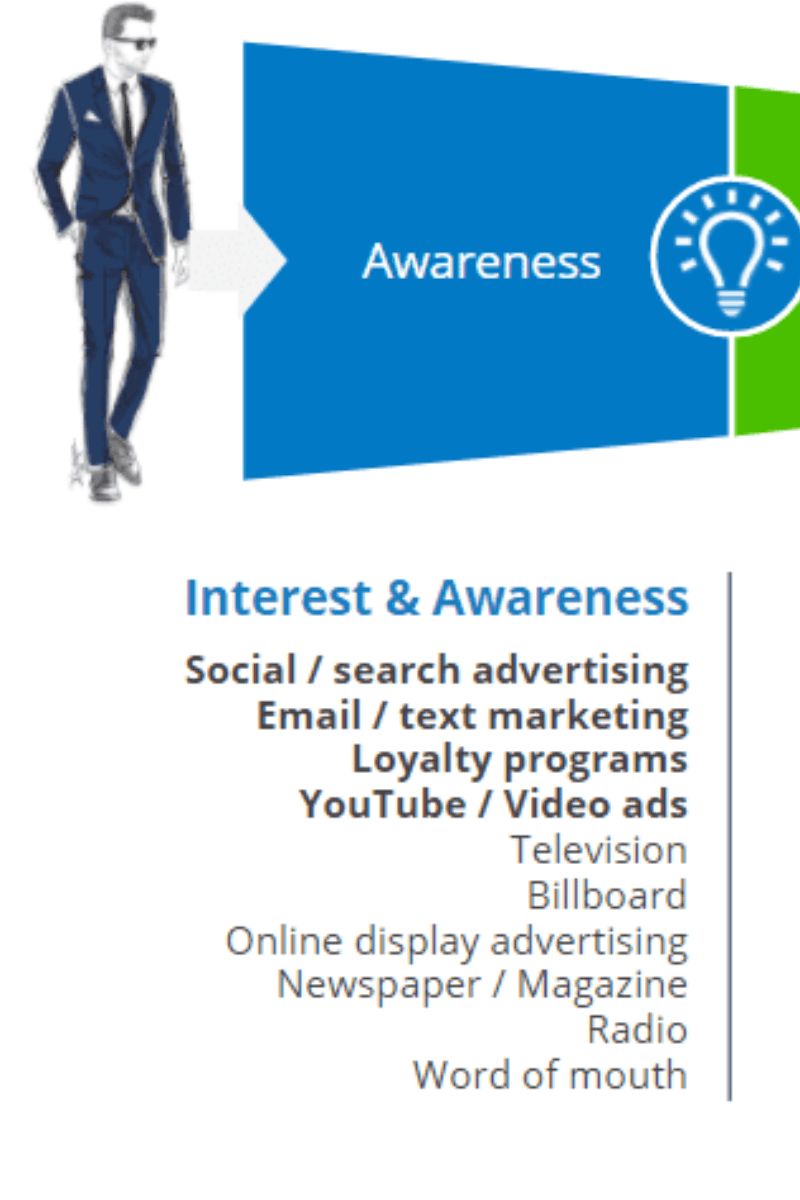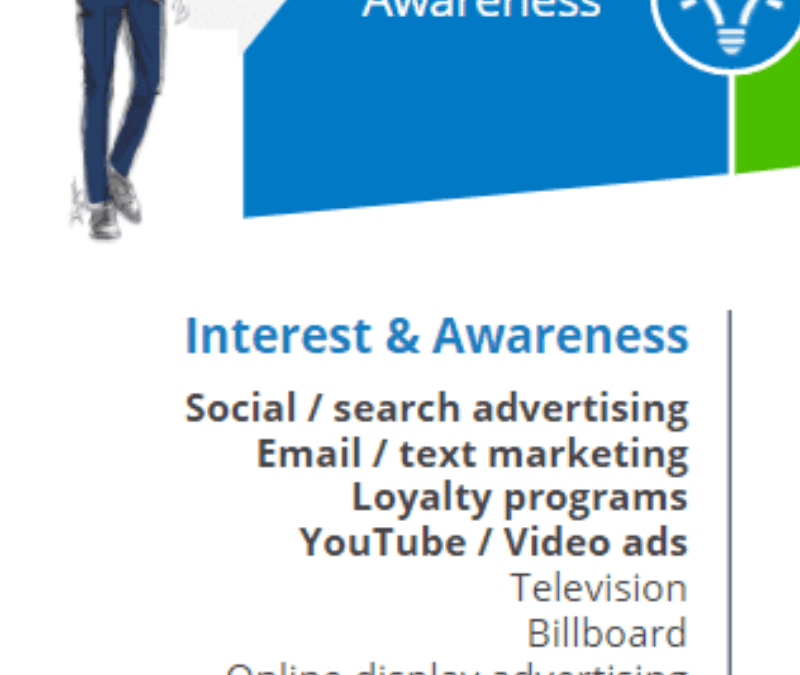Modern Customer Journey: Awareness
We’re continuing our look at the modern customer journey. Throughout this six part series, we’re going to give you insight into how consumers think and decide on purchasing a product or service. As the world continues to move exponentially faster into the digital world, understanding how modern sales works is vital for business success.
Awareness (Part 2) – This Post

Awareness
Customers are aware that they have a problem. They are also aware that the need a solution.
So the real question is, how do they become aware of you?
Traditionally, this has meant advertising. I still remember the voices of great radio announcers while growing up. From the local radio deejay to my favorite sports broadcasters, their voices clearly communicated the story they were trying to tell.
All advertising is trying to tell a similar story: We solve your problem.
If the customer believes the advertisement, they will spend their money. If they don’t, they will move on.
That effect has only amplified and multiplied in the digital age. In fact, latest stats suggest that the average person sees between 4,000 and 10,000 ads every single day.
How you position your business to be seen clearly among the noise is key. So, what’s a business owner to do?
Online advertising (Correctly)
The modern customer journey starts with awareness for the customer, but the same is true for business owners. We frequently consult startups (and people thinking of starting up) and one thing inevitably holds true for the new business owner.
When asked, “Who is your ideal client?” they will respond, “Everyone.”
Ever been there?
The sad reality is that it’s not true.
I’ve seen that in my own journey. Do the coaching principles work for everyone? Absolutely. Do I think that everyone could benefit from coaching? 100%. Does that mean I’m the perfect coach for everyone? Not at all. Unfortunately, I didn’t always think that. It wasn’t until I had a my first bad client that I said, “I don’t want to coach everyone.”
Your business has to have clarity on who it helps and why. Your ideal customer isn’t “Everyone.” It is a clearly defined group of people willing to rave about your product. (We’ll talk about that in a future post).
Good advertising campaigns should make you money. This means that the first step in the process is to understand who is buying your product and why they think it is important. The more you understand your clients, the better ads that can be created.
Sample Sizes
Let’s suppose and clothing boutique is looking to market their fall clothing line on their website. Think of the difference between the following two demographics
Audience One: Women.
Audience Two: Women in our city between the ages of 30 and 45 who are married, have two kids, a college education, and work full time for living.
In this example, audience one will give you several billion people in Facebook results. Contrast this with audience two which might only give you two thousand results. Don’t be fooled by false metrics. Most of those 3.5 billion are not interested in the fall clothing line and advertising dollars are being wasted.
In contrast, audience two will have a group of highly engaged audience members who are interested in the product are more likely to take action (follow on social media, visit the website, purchase in store, etc…)
Where we start
Requests for online advertising are common, but here is our response to everyone: online ads are the last step in our process. We will explore this philosophy more fully in future posts throughout the series, but let me say this for now: ads are a waste of time and money if you are listed correctly on Google and available on a variety of websites.
The great things about ads is that they work. the problem with ads is that once you turn the money off, the leads dry up. We find it much more beneficial to fix organic searches and listings first so that anyone can find you, and then ads come in as a supplement to what is already doing, instead of trying to bandage up what is broken.
The modern customer journey starts with awareness for both the customer and the business. Pique your customers curiosity, and as we will see in the next post, make yourself findable when they need you.

